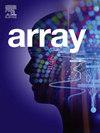SAD: Self-assessment of depression for Bangladeshi university students using machine learning and NLP
IF 2.3
Q2 COMPUTER SCIENCE, THEORY & METHODS
引用次数: 0
Abstract
Depressive illness, influenced by social, psychological, and biological factors, is a significant public health concern that necessitates accurate and prompt diagnosis for effective treatment. This study explores the multifaceted nature of depression by investigating its correlation with various social factors and employing machine learning, natural language processing, and explainable AI to analyze depression assessment scales. Data from a survey of 520 Bangladeshi university students, encompassing socio-personal and clinical questions, was utilized in this study. Eight machine learning algorithms with optimized hyperparameters were applied to evaluate eight depression assessment scales, identifying the most effective one. Additionally, ten machine learning models, including five BERT-based and two generative large language models, were tested using three prompting approaches and assessed across four categories of social factors: relationship dynamics, parental pressure, academic contentment, and exposure to violence. The results showed that support vector machines achieved a remarkable 99.14% accuracy with the PHQ9 scale. While considering the social factors, the stacking ensemble classifier demonstrated the best results. Among NLP approaches, BioBERT outperformed other BERT-based models with 90.34% accuracy when considering all social aspects. In prompting approaches, the Tree of Thought prompting on Claude Sonnet surpassed other prompting techniques with 75.00% accuracy. However, traditional machine learning models outshined NLP methods in tabular data analysis, with the stacking ensemble model achieving the highest accuracy of 97.88%. The interpretability of the top-performing classifier was ensured using LIME.
SAD:使用机器学习和自然语言处理对孟加拉国大学生抑郁症的自我评估
抑郁症受社会、心理和生物因素的影响,是一个重大的公共卫生问题,需要准确和及时的诊断才能有效治疗。本研究通过研究抑郁症与各种社会因素的相关性,并利用机器学习、自然语言处理和可解释人工智能来分析抑郁症的评估量表,探索抑郁症的多面性。本研究利用了对520名孟加拉国大学生的调查数据,包括社会个人和临床问题。采用超参数优化后的8种机器学习算法对8种抑郁评估量表进行评估,找出最有效的量表。此外,使用三种提示方法测试了十个机器学习模型,包括五个基于bert的模型和两个生成式大型语言模型,并评估了四类社会因素:关系动态、父母压力、学术满足感和暴力暴露。结果表明,支持向量机在PHQ9量表上的准确率达到了99.14%。在考虑社会因素的情况下,叠加集成分类器的分类效果最好。在NLP方法中,在考虑所有社会方面时,BioBERT以90.34%的准确率优于其他基于bert的模型。在提示方法中,克劳德十四行诗的思想树提示以75.00%的准确率超过了其他提示方法。然而,传统的机器学习模型在表格数据分析方面优于NLP方法,其中堆叠集成模型的准确率最高,达到97.88%。使用LIME确保了性能最好的分类器的可解释性。
本文章由计算机程序翻译,如有差异,请以英文原文为准。
求助全文
约1分钟内获得全文
求助全文

 求助内容:
求助内容: 应助结果提醒方式:
应助结果提醒方式:


